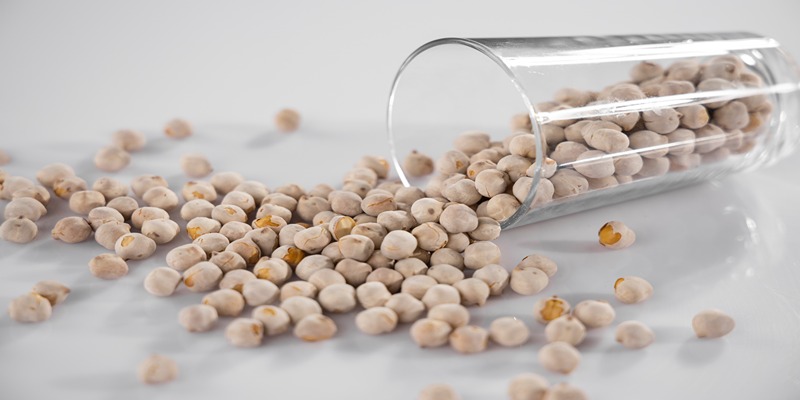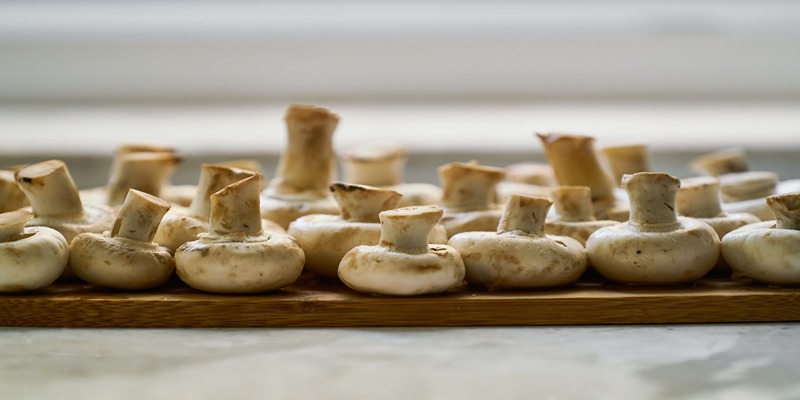Achieve Nutritional Balance with These Complete Vegan Protein Combinations
Dec 04, 2023 By Nancy Miller
Learning about and obtaining a variety of protein choices is crucial for those who want to live a vegan diet. Protein requirements may be met in plenty on plant-based diets due to their diversity. Vegan protein sources are many, and this article explores them all to show how important they are for a healthy diet. Proteins that are suitable for vegans may be found in a wide variety of plant-based foods, including nuts, seeds, legumes, and whole grains. In terms of general health, muscular development, and performance, they are crucial. Stay nourished and satisfied on your vegan journey with this article's handy guide to plant-based proteins.

The Science of Complete Proteins
The idea of complete proteins is very important in the field of nutrition, particularly for plant-based diets. A few of the amino acids needed to make proteins are not naturally occurring in the human body. All nine of the amino acids are present in enough amounts in a complete protein. It is crucial for vegans to know how to mix meals to fulfill their nutritional requirements since plant-based sources of these complete proteins are scarce, and they are usually found in animal products.
What Makes a Protein Complete?
When all nine of the body's required amino acids are present, we say that the protein is complete. Essential for processes like hormone synthesis, nutrition absorption, and muscle regeneration, these amino acids are like constructing blocks for protein. Proteins derived from plants sometimes miss a crucial amino acid, in contrast to full proteins found in animals. Vegans can still get all the amino acids they need by eating a variety of plant-based meals; this is called complete protein.
Importance in Vegan Diets
In order to be healthy, vegans must ensure that they get all the protein their bodies need. Many people mistakenly believe that getting adequate protein is difficult when they don't eat meat. Vegans may easily get enough protein in their diets if they do their research and prepare ahead of time. It is possible to ingest all nine required amino acids by combining different plant-based sources, such as beans with rice or hummus with whole wheat bread. In addition to covering all the essential elements, this method promotes a varied and tasty diet. In order to eat a healthy, well-rounded vegan diet, it is essential to understand and use the idea of complete proteins.
Best Vegan Protein Combinations
In vegan nutrition, combining various plant-based foods is key to forming complete proteins. This method ensures that vegans receive all essential amino acids crucial for health and well-being. There are several effective combinations that can be incorporated into daily meals, offering variety and nutritional balance. These combinations are not only healthful but also delicious and satisfying.
Legumes and Grains: A Perfect Pair
Legumes and grains together form one of the most classic and efficient protein combinations in a vegan diet. Examples include lentils with rice or beans with corn tortillas. Legumes, such as beans, lentils, and chickpeas, are high in lysine but low in methionine, while grains like rice, wheat, and corn contain high methionine but less lysine. When eaten together, they complement each other, providing a full profile of essential amino acids. This pairing is not only nutritious but also forms the base of many traditional dishes around the world, showcasing its versatility and global appeal.
Nuts and Seeds with Whole Grains
Nuts and seeds are another excellent source of vegan protein, rich in essential amino acids, healthy fats, and various micronutrients. When combined with whole grains, they offer a complete protein profile. For instance, almond butter spread on whole grain bread or quinoa mixed with sunflower seeds. These combinations are not only easy to prepare but also serve as a great source of sustained energy, making them ideal for breakfast or snacks.
Combining Multiple Plant-Based Sources
Diversity is key in a vegan diet. By incorporating multiple plant-based sources of protein in a single meal, one can easily attain a complete amino acid profile. A salad with mixed greens, chickpeas, sunflower seeds, and quinoa is an example of such a combination. These meals offer the benefit of a wide array of nutrients along with protein. Such varied combinations ensure that one gets not only the full spectrum of essential amino acids but also other important nutrients like fiber, vitamins, and minerals. This approach to meal planning is not only healthful but also brings an exciting variety to the vegan diet.

Incorporating Complete Proteins into Meals
Integrating complete proteins into daily meals is a cornerstone of a balanced vegan diet. Thoughtful planning can ensure that each meal is not only nourishing but also delicious and satisfying. From the first meal of the day to the last, there are numerous ways to include these essential nutrients in a vegan meal plan. This ensures that vegans can enjoy a diverse, healthful, and protein-rich diet every day.
Breakfast Ideas for a Strong Start
Breakfast is the ideal time to kickstart the day with a protein-rich meal. A tofu scramble, enriched with vegetables like spinach and bell peppers, offers a high-protein, flavorful start. Whole grain toast with nut butter, alongside a smoothie containing hemp seeds or pea protein powder, is another excellent option. Oatmeal mixed with chia seeds, topped with almond butter and fresh fruit, also provides a balanced combination of complete proteins, fiber, and essential nutrients. These breakfast ideas are not only easy to prepare but also energizing, setting a positive tone for the day.
Lunch Options: Light but Nutritious
Lunchtime calls for meals that are light yet sustaining. A quinoa and black bean salad dressed with lemon and olive oil is a perfect midday meal. Another option could be a whole wheat pita stuffed with hummus and a variety of vegetables. Lentil soup with barley or a Buddha bowl comprising brown rice, edamame, and roasted vegetables are also excellent choices. These lunches are not only packed with complete proteins but also provide lasting energy without heaviness.
Dinner: Balancing Macros and Taste
Dinner is an opportunity to create a more elaborate meal that balances macronutrients and flavors. A stir-fry with tempeh served over brown rice or quinoa, incorporates a complete protein while offering a burst of flavors. Pasta made from legumes, like chickpeas or lentils, served with a rich, nut-based sauce, provides a comforting yet nutritious meal. A vegetable curry with chickpeas and served with whole-grain naan or rice also makes for a satisfying, protein-rich dinner. These meals not only meet nutritional needs but also cater to the palate, making vegan dinners something to look forward to.
Conclusion
Not only is a vegan meal that is well-planned and full of complete proteins nutritionally sufficient, but it is also varied and delicious. Vegans may easily get enough of the necessary amino acids by learning about and using different plant-based combinations. These meals, which are high in protein, are good for you in the long run, and you should eat them every day. Following this vegan diet plan will lead you on a path to better health and more delicious food.







